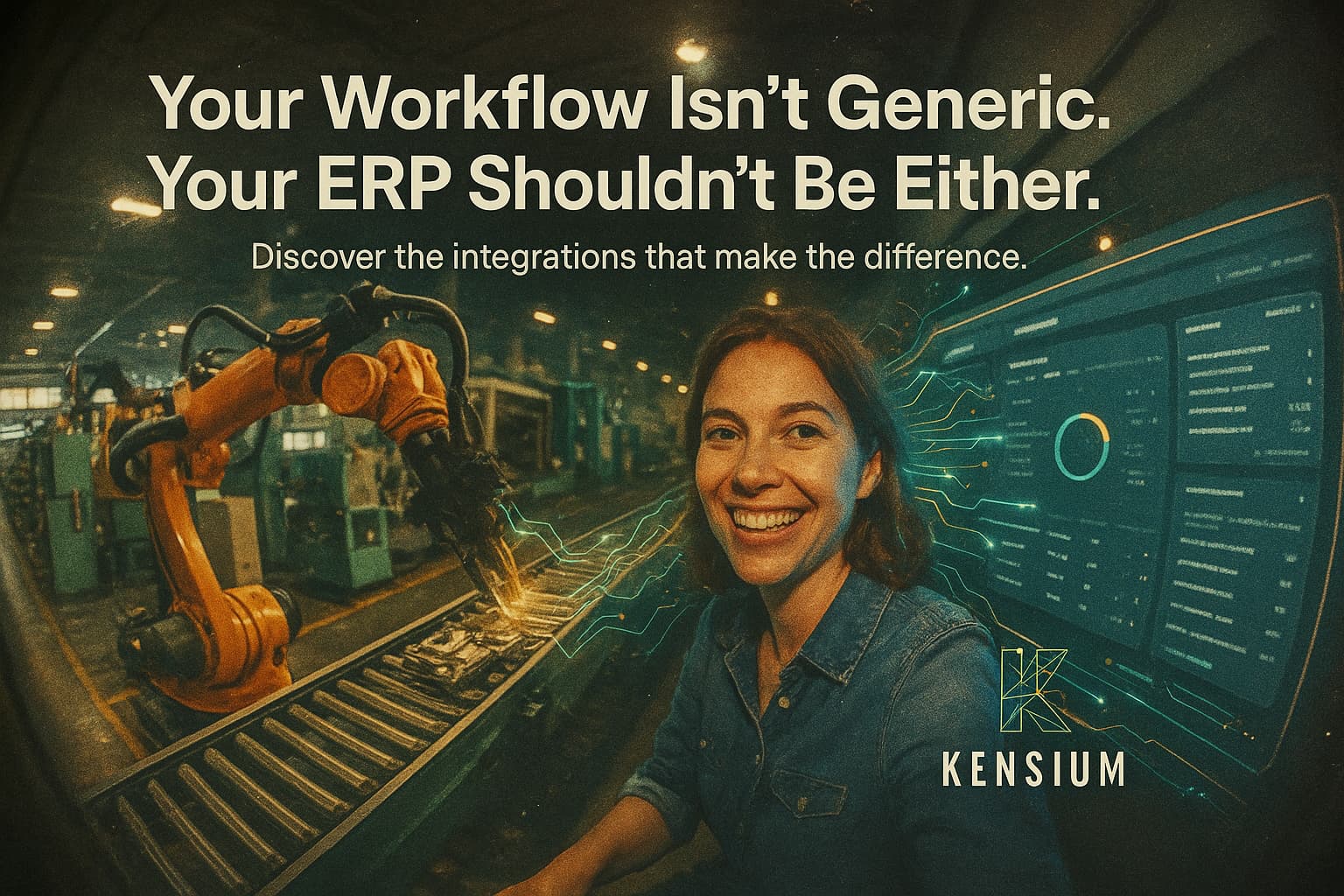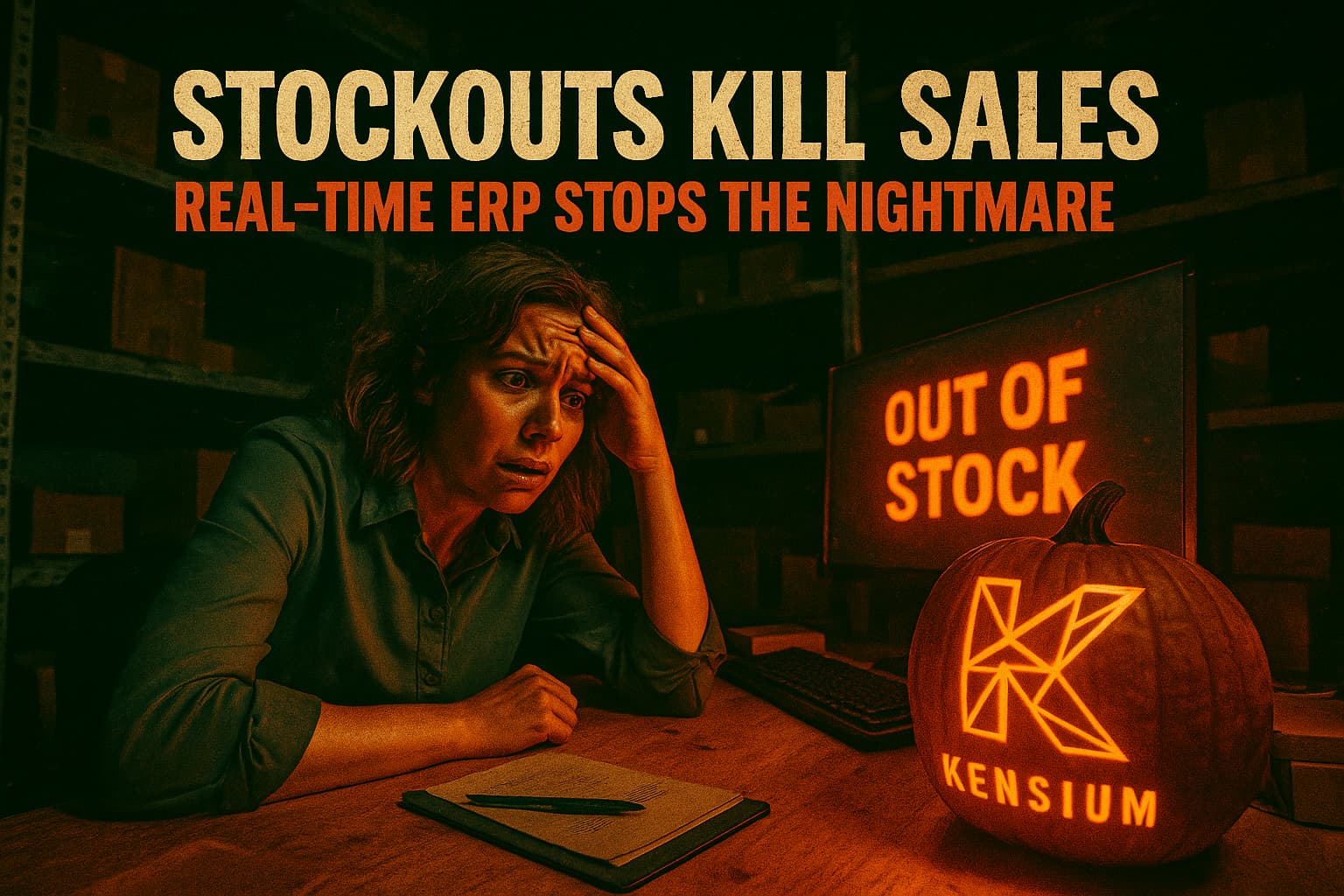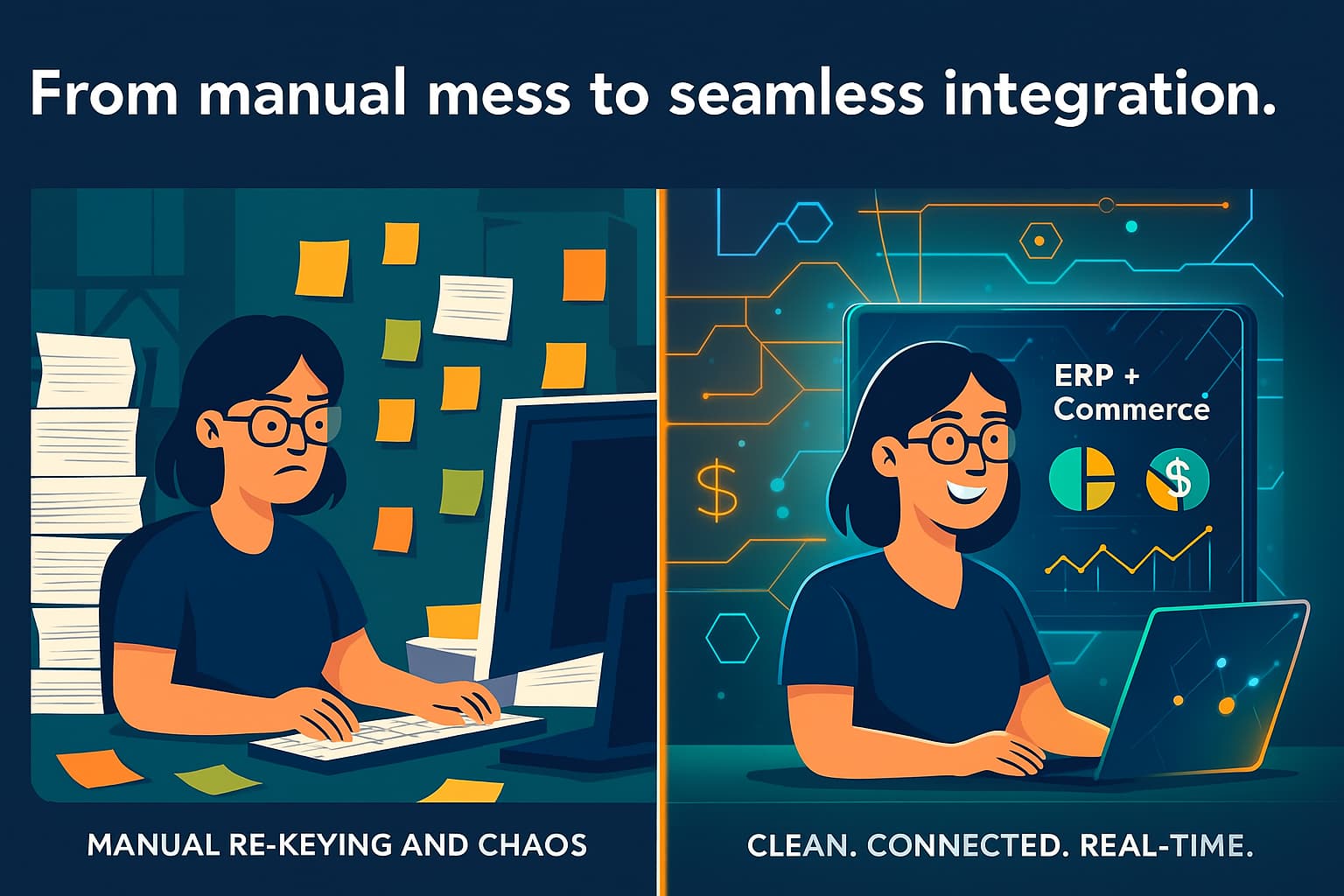
The Question Every Retailer Eventually Asks
If you run a retail business, you’ve probably experienced this moment:
You sell an item online… but your warehouse is out of stock.
You launch a promotion… but pricing doesn’t match between your POS and your eCommerce site.
You pull sales reports… and discover three different numbers for “total orders” from three different systems.
“Why can’t my online store talk to my ERP?” you ask yourself in frustration.
You’re not alone. As one eCommerce blog bluntly puts it:
“If you’ve ever oversold a product, missed a restock alert, or had to cancel an order because the inventory wasn’t actually there… disconnected systems create blind spots” (sku.io).
These blind spots are the result of data silos—when your eCommerce platform and ERP system aren’t talking to each other.
What Are Data Silos (and Why They’re Killing Retail Operations)?
In retail, a data silo happens when different systems—your ERP, your eCommerce platform, your POS—operate independently. Data is updated in one place but doesn’t sync in another.
This causes:
- Inventory mismatches → Overselling or backorders.
- Pricing inconsistencies → Discounts or promotions not reflected everywhere.
- Order delays → Manual order re-entry from your store into ERP.
- Poor customer experience → Cancelled orders or unexpected “out of stock” messages.
As Datagence explains:
“Customers are complaining… an item they ordered was listed as ‘in stock’ but later canceled because it wasn’t available. When systems like your ERP, digital storefront, and inventory management tools operate in isolation… communication gaps… lead to operational errors, poor customer experiences, and lost revenue” (datagence.io).
Why Your Online Store and ERP Don’t ‘Talk’
Retailers often think they can just “connect” their ERP and eCommerce platform—but in reality, the integration challenges are deeper:
- Different data structures – Your ERP stores products, SKUs, and pricing differently than your online store.
- Batch vs. real-time sync – Some connectors update every few hours, which can cause stale data and oversells.
- Custom workflows – Special pricing rules, kits/bundles, and store-specific taxes often require custom logic.
- Limited native integrations – Many ERPs don’t have built-in connectors for all eCommerce platforms.
The result?
“Platforms don’t sync in real-time, which leads to outdated info… No shared visibility across departments creates duplicate work… There’s no single source of truth.”
Case Study: District Camera – From Fragmented Systems to a Single Source of Truth
Industry: Electronics, Retail
Platforms: Shopify + Kensium POS + Acumatica ERP
District Camera was running separate retail POS and online store systems, which created data silos, manual work, and frequent discrepancies in inventory. Kensium integrated their Shopify eCommerce platform with Acumatica ERP and Kensium POS, enabling:
- Real-time inventory synchronization between online and in-store sales.
- Automated order flow from eCommerce into ERP for faster fulfillment.
- Unified reporting across all sales channels for accurate, real-time insights.
The result was a seamless commerce experience that eliminated overselling, reduced manual entry, and created a true single source of truth for their retail operations.
Read the full District Camera success story →
The Cost of Data Silos in Retail
Data silos hurt both sales performance and operational efficiency.
Gartner research estimates that bad data costs companies $15M per year on average—and in retail, much of that bad data comes from disconnected systems.
How Integrating ERP with eCommerce Eliminates Data Silos
A proper integration means your ERP and online store share one source of truth for all critical data:
- Real-time inventory sync → No overselling or stockouts.
- Unified pricing and promotions → Discounts flow instantly from ERP to your storefront.
- Automated order flow → Orders placed online are immediately in ERP for picking, packing, and shipping.
- Consistent customer data → Loyalty programs, purchase history, and contact info are synced.
How Kensium Solves the ‘Silent Store’ Problem
Kensium specializes in ERP-integrated commerce solutions—which means we’ve built connectors, workflows, and automation specifically to make your online store and ERP “talk” flawlessly.
With over 150 ERP–eCommerce integrations delivered, we know the pitfalls—and how to avoid them.

What Kensium Delivers:
- Pre-built connectors for platforms like BigCommerce, Shopify, and Adobe Commerce with Acumatica ERP.
- Custom workflows to handle unique retail processes (e.g., multi-location inventory, marketplace sales).
- Real-time sync for inventory, pricing, and orders.
- One source of truth across all sales channels—online, in-store, marketplaces.
Key Takeaways for Retailers
- If your ERP and online store aren’t talking, you have data silos.
- Data silos cause overselling, stockouts, and reporting errors.
- ERP–eCommerce integration creates a single source of truth that improves efficiency and accuracy.
- Kensium has the tools and experience to make integration painless and profitable.
FAQ
Q: Why can’t my online store talk to my ERP?
Because they operate in separate data silos with different structures, sync schedules, and workflows. Without integration, updates in one system don’t reach the other in real time.
Q: What problems do data silos cause in retail?
Data silos cause overselling, stockouts, pricing mismatches, manual order entry, delayed fulfillment, and inaccurate sales reporting.
Q: How does ERP–eCommerce integration fix this?
ERP–eCommerce integration creates a single source of truth by syncing inventory, pricing, and orders in real time across both systems.
Q: Can you give a real example?
Kensium integrated District Camera’s Shopify store with Acumatica ERP and Kensium POS, eliminating overselling and unifying online and in-store inventory.
Q: How can Kensium help me?
Kensium provides pre-built connectors and custom integrations for retail ERPs and eCommerce platforms, ensuring real-time sync, accurate data, and unified operations.
Next Step: See How ERP–Ecommerce Integration Can Work for You
Stop letting your systems work in isolation. Let’s connect your store and ERP so they work as one.








.png)
















































-small.jpeg)







